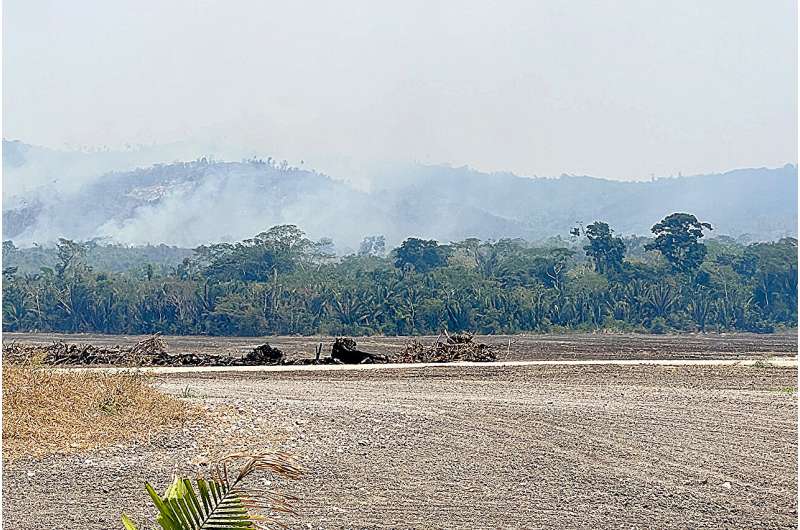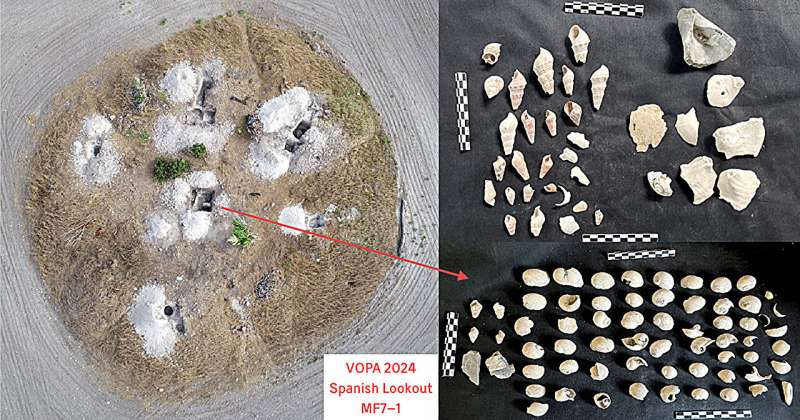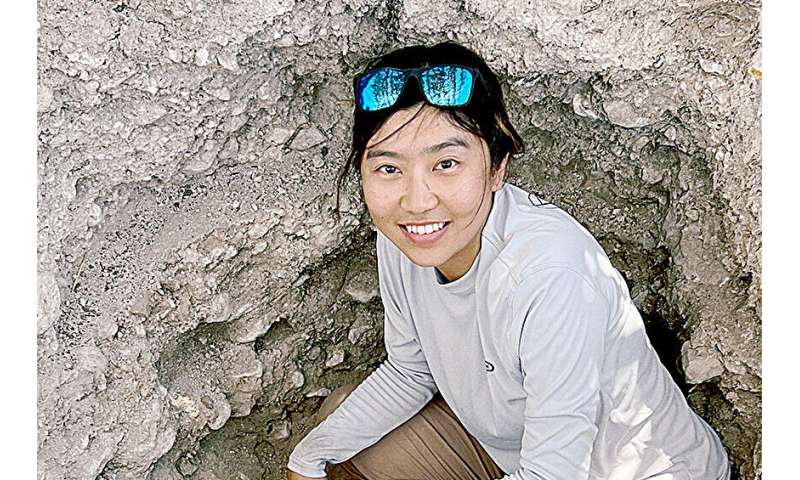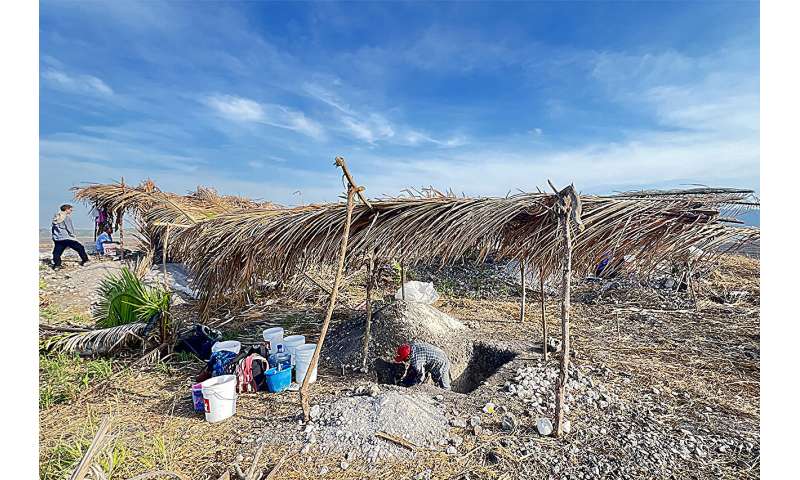This article has been reviewed according to Science X's editorial process and policies. Editors have highlighted the following attributes while ensuring the content's credibility:
fact-checked
trusted source
proofread
Unveiling the ancient Maya's relationship to animals and nature

As the scorching May sun of Central Belize blazes down on us, temperatures soar to a staggering 106°F. Local farmers anxiously await the onset of the rainy season to sow their crops, but the much-needed first rain remains elusive. This property is owned by a community of Mennonites who live in the town of Outlook to the west. The maize fields lie empty except for us. We are the Valley of Peace Archaeology project team, named after a nearby village where our foremen and excavation assistants live. We are braving the extreme heat to conduct salvage excavations of 11 ancient Maya mounds.
The relentless drought has sparked widespread wildfires, turning the forests on the edges of this deforested area into a smoky chaos. We feel like we are in a high-temperature oven. Today, a hummingbird, displaced by the fires, flew into our shaded palapas, seeking coolness. It lingered briefly before flying off, weakly searching for precious water.
In stark contrast to the severe environmental destruction that we see all around us, our excavations reveal the ancestral Maya's profound respect for nature and animals. I'm standing thigh-high in an excavating trench, staring down at an animal cache for Maya ritual that we just uncovered. The cache contains the bones of white-tailed deer, dogs and raccoons, indicating that these mammals once thrived in the lush forests surrounding these ancient Maya communities.
U. of I. anthropology professor Lisa Lucero, the principal investigator of the VOPA project and my mentor, argues that the ancient Maya treated animals and all other ecosystem members as equals to humans. In their world view, there was no division between "culture" and "nature." In Popol Vuh, the 16th-century K'iche' Maya creation story, the "Plumed Serpent" created animals before humans, with the only difference being their ways of speaking. To the Maya, the world is a holistic garden where humans, plants, animals and nature coexist harmoniously.

The ancestral Maya engaged with animals in multifaceted ways. Animals were eaten, but they also were essential to vital rituals. In the VOPA research area, we have uncovered animal remains, including bones, modified tusks and antlers. These artifacts are found in commoners' kitchen refuse, but they also appear in elite palaces and temples as offerings, and in burials as treasured possessions.
This summer, we consistently find animal remains in ancient Maya houses, demonstrating the Maya's sustainable interactions with animals throughout the millennia of their history. Inside the plaza floors of platformed structures, we have recovered dozens of freshwater Pomacea shells and several large Caribbean Crown conch shells, which have been burned. These shells show how the Maya gained access to both freshwater and marine resources thousands of years ago. These shells are essential to Maya rituals even today.
We also uncover numerous ornaments from Maya burial sites. These items were carved from mammal or rodent teeth and bones and were likely worn as necklaces or other adornments.

Rachel Taylor, a recent U. of I. anthropology Ph.D., analyzed 1,257 archaeological faunal specimens from the Valley of Peace region, where two particularly intriguing animal deposits caught our attention. The first is two large cats found in 2002 in the mid-sized Maya urban center, Yalbac. Roughly 1,500 years ago, Maya residents of Yalbac ceremonially interred the bodies of a jaguar and an ocelot beneath the terraced steps of a residence not far from a temple known as 3D. Jaguars were considered the "kings" of the forest. They symbolized power and represented darkness and the underworld in the Maya world view.
The ocelot's role is less understood.
The second find occurred in 2014 in Cara Blanca, an ancient Maya pilgrimage destination lying to the north of Yalbac. Here, the team uncovered 34 armadillo scutes, the bony scales that make up the animals' segmented armor, in a temple near one of the 25 sacred pools used by the Maya.
-

Yifan Wang in an excavation trench on site in Belize. Credit: Yifan Wang -

The team excavates ancient Maya mounds under palapas in a maize field. Credit: VOPA and Belize Institute of Archaeology, NICH
For the Maya, armadillos symbolized fertility and procreation. Their presence in the temple suggests that the Maya performed water-related rituals to ensure agricultural fertility and water abundance during the extended droughts that parched the region a thousand years ago.
As we piece together these glimpses of the past, we are reminded of the contrast between the ancestral Maya's intimate relationships with nature and animals and the current environmental challenges we face today. My research involves analyzing stable isotopes in ancient animal remains recovered from Maya sites. I explore how Maya world views inspired people to maintain respectful and sustainable relationships with nature for millennia. By rediscovering traditional Maya strategies for sustainable co-living with other nonhuman creatures, I hope to offer valuable insights from thousands of years ago that can help address our current environmental challenges.
Provided by University of Illinois at Urbana-Champaign




















